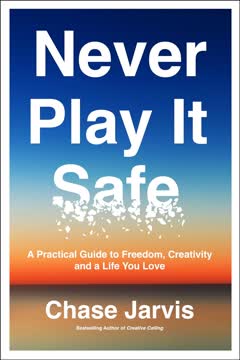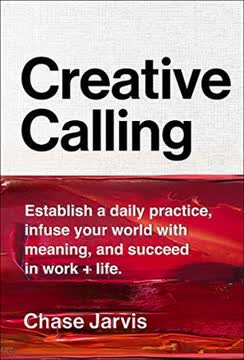Key Takeaways
1. Reject the Illusion of Safety; Embrace Your Dynamic Nature
Safety is an illusion.
Challenge the norm. Most people are conditioned to seek safety, believing it's essential for a good life, but this pursuit often keeps us from feeling truly alive. Playing it safe means playing small, listening to self-doubt, and ignoring our true selves, leading to unfulfilled potential in careers, relationships, and personal growth. It's conformity for no other reason than well-worn paths feel easier.
Fear's limitations. Playing it safe is ultimately driven by fear, which is optimized only for survival, not for creativity, happiness, joy, or fulfillment. The best experiences in life lie just beyond our comfort zones, challenging us to grow and be brave. Avoiding danger is no safer in the long run than outright exposure; life is either a daring adventure or nothing.
Reclaim your power. The opposite of playing it safe isn't reckless risk, but freedom—creating your own game and betting on yourself. The tools needed for this transformation reside naturally within you: bravery, power, and wild creativity. Your urgent task is to excavate these buried tools and rediscover how to leverage them to create a life you love, choosing excellence over mediocrity.
2. Master Your Attention: It's Your Ultimate Superpower
The ability to focus and direct attention “is the distinguishing factor between those who will succeed in any endeavor and those who won’t.”
Attention as life force. From birth, we seek attention to survive, but as adults, constantly trying to get attention from others traps us. Instead, learning to direct your attention is the true superpower, allowing you to be mindful, present, and tackle tasks with focus, sending a powerful message that you truly see and hear others.
Combat distractions. We've become willing participants in haphazardly doling out attention to anything and everything, letting algorithms hijack our brains. This "playing it safe" by staying distracted prevents us from designing our lives intentionally. Both external distractions (phones, news) and internal ones (ruminating thoughts, existential worry) erode our ability to focus, but our natural state is deep attention.
Train and trust. To reclaim your attention, address what you can control.
- Body: Prioritize sleep, exercise (30-45 mins daily for prefrontal cortex boost), and cold exposure (even a cold shower blast).
- People: Audit your circle; surround yourself with uplifting, positive individuals who support your growth.
- Environment: Create spaces that inspire focus and minimize clutter, whether it's your desk or your home.
Remember, what you pay attention to expands, so choose wisely.
3. Time is Malleable: Live in the Now and Play an Infinite Game
As soon as I got to Cerro Gordo, there was suddenly time for everything, even though I knew this project would take decades.
Time's elasticity. Time is not a rigid conveyor belt; it expands and contracts based on our engagement. Brent Underwood's story of buying a ghost town, Cerro Gordo, illustrates how finding a purpose bigger than himself transformed his relationship with time, replacing anxiety with presence and purpose.
Life is long. The mantra "life is short" often pushes us to rush and play it safe, fearing mistakes. However, most of us are "time billionaires" with decades left. Embrace "purposeful drifting"—following curiosity, taking risks, and reinventing yourself.
- Lucille Ball found fame at 40.
- Momofuku Ando invented instant noodles at 48.
- Leonard Cohen toured in his 70s.
- Carmen Herrera had her first retrospective at 100.
No experience is wasted; every step is valuable data for your unique journey.
Embrace the now. The past is gone, the future an illusion; only the present moment exists. Dwelling on past or future leads to suffering.
- Infinite Game: Treat life as an infinite game, where the goal is to keep playing, learning, and growing, rather than a finite game with winners and losers.
- Systems over Schedules: Create routines that support your values (e.g., morning walks) rather than being dictated by rigid schedules.
- End Waiting: Stop "killing time" by being fully present in mundane moments, like waiting in line.
4. Trust Your Intuition: Your Inner Compass Guides Your True Path
You’ve always had the power to go back to Kansas.
Beyond rational thought. Intuition is a powerful, enigmatic process, drawing on past experiences and internal signals to guide decisions with astonishing speed, often bypassing the conscious mind. Society, however, conditions us to prioritize the rational, making us mistrust our inner knowing. Captain Sully Sullenberger's "Miracle on the Hudson" exemplifies trusting gut feelings over protocol in a life-or-death situation.
Find your compass. Forget society's "map" for your life; it's often trash. Your intuition is your internal compass, pointing in a general direction and trusting you to navigate the details.
- Acknowledge your deepest longings, even vague ones.
- Take action, experiment, and dedicate time to exploring these desires.
- Beware of "magnetic fields" (loved ones' well-meaning advice) that pull you from your true north.
Playing it safe is the riskiest thing you can do; following someone else's plan will never bring true happiness.
Recognize the signals. Reconnecting with intuition requires slowing down and creating space.
- Body Signals: Feelings of expansion/openness (yes) vs. constriction/contraction (no).
- Immediate Impressions: "Hell yes, or it's a no" framework.
- Energy/Emotional Alignment: Sparks of confidence, genuine feelings of "rightness."
- Quiet Mindfulness: Use post-meditation calm to ask for guidance.
- Athletic Mind: Envision the outcome, then trust your subconscious to deliver.
Glennon Doyle's choice to prioritize "soul suicide" over "career suicide" demonstrates the power of honoring inner wisdom despite external pressure.
5. Leverage Constraints: Limits Fuel Creativity and Growth
When everything is possible, nothing is possible.
Constraints as catalysts. Imposing limits, though counterintuitive, is a brilliant lever for overcoming challenges and unlocking creativity. Just as building a house requires countless constraints, so does building a life or solving problems. The very act of limiting breadth creates space for depth, yielding innovative results.
Four types of constraints:
- Self-Imposed: Intentional limits to drive focus.
- Numerical: Timeboxing, budgeting (e.g., 500 words/day).
- Creative: Limiting color, style, genre (e.g., Chris Ballew's two-string guitar).
- Human: Choosing collaborators based on value alignment.
- Externally-Imposed: Uncontrollable events (weather, health, accidents). Frida Kahlo and Oksana Masters transformed their physical hardships into artistic and athletic greatness.
- Perceived: Limiting beliefs (self-doubt, perfectionism, imposter syndrome). Jordan Peele defied genre expectations; Whitney Wolfe Herd challenged gender norms in dating.
- Environmental: Controllable surroundings (job, clutter, finances). Scott Harrison transformed his hedonistic nightlife into founding charity: water.
Beyond "more." Unconstrained ambition, the pursuit of "more for more's sake," can lead to burnout and self-betrayal. Just as a domesticated killer whale suffers from flaccid fin syndrome without challenge, a life void of constraints leads to atrophy. Embrace challenges, for they are necessary for growth and evolution, shaping your creativity and accessing opportunity.
6. Reframe Failure: It's a Feature, Not a Flaw, for Rapid Learning
The good stuff in life doesn’t come from success, the good stuff comes from failing.
Failure is inevitable. Everyone fails, often daily, but the stigma around it keeps many from reaching their potential. Melissa Arnot Reid, a mountaineer who summited Everest without oxygen on her fifth attempt, learned to treat failure as a strategic part of life, replacing "afraid to fail" with "afraid to live."
Learn from the fall. The "try and try again" mantra is insufficient; systematic reflection and quick, surgical adjustments after failure are crucial.
- "Fail-washing" (minimizing failure's pain) is toxic; acknowledge the hurt.
- Stay neutral (Michael Gervais): Don't swing between toxic positivity and catastrophizing.
- Detach self-worth from outcomes (Jamie Kern Lima): You are not a failure, your idea failed.
- Minimum Viable Product (MVP) is misunderstood: It's about quality first attempts, not garbage, to gather meaningful data.
Types of failure and rules for failing well:
- Basic Failure: Simple cause-and-effect (e.g., Janet Jackson's wardrobe malfunction).
- Complex Failure: Multiple causes in dynamic environments (e.g., "Miracle on Ice").
- Intelligent Failure: Experimentation and risk-taking leading to valuable learning (e.g., Wright brothers' flight).
- Rules for Failing:
- Don't Fail Before You Fail: Don't self-sabotage.
- Don't Fail to Suck: Embrace being a beginner.
- Fail—a Lot: Increase reps; even pros miss.
- Fail Fast: Run tiny experiments, scale up.
- Fail Publicly: Normalize struggle, gain connection.
Embrace "extreme ownership" (Jocko Willink) to gain the "full benefit" of every setback.
7. Prioritize Play: It's the Engine of a Meaningful Life
Play doesn’t just help us to explore what is essential. It is essential in and of itself.
Rediscover play. Novak Djokovic's return to tennis after burnout, inspired by his family's joyful play, highlights that play is fuel for life. The industrial revolution pushed play aside, but re-engaging with it is an urgent task. Play is a natural state, a flame that can be rekindled, transforming daily experiences with joy and curiosity.
Play's profound benefits. Play is not just a break from work; it's the bedrock of accomplishment.
- Brain Booster: "Nothing lights up the brain like play" (Stuart Brown), enhancing neural plasticity and adaptation.
- Social Development: Play is a "ritualistic force" (Johan Huizinga) and a "language" (Brian Sutton-Smith) that shapes culture and connection.
- Freedom of Thought: Friedrich Schiller's "play drive" reconciles our "sense drive" (materiality) with our "form drive" (reason), allowing us to dance between being and becoming.
Charlie Hoehn cured his anxiety by committing to daily play, realizing it "utterly destroys anxiety."
Flip the script: Play first, work second. We're conditioned to see work as serious and play as frivolous. But what if we approached all tasks with levity and presence?
- "Big Magic" (Elizabeth Gilbert): Flow states, often associated with play, are achievable through tools and tricks, not just inspiration.
- Strategic Renewal: Integrate short, intentional breaks (30 mins after 90 mins of focus) to rejuvenate and restore.
- Tiny Experiment: Transform a chore, like folding laundry, into a mindful, sensory experience. Engage your senses, find gratitude, and notice the shift from dread to joy. This mindset can be applied to anything, from traffic to difficult conversations.
8. Cultivate Deliberate Practice: Build the Identity of Your Future Self
Every action you take is a vote for the kind of person you want to become.
Success leaves clues. World-class performers like Stephen Curry (basketball), Yasmeen Lari (architecture), and Joshua Roman (cello) don't have secret tricks; they ruthlessly focus on the fundamentals, love the process, and align their practice with their identity. This "deliberate practice" (Anders Ericsson) is a structured, effortful activity aimed at continuous improvement.
Three pillars of practice:
- Fundamentals: Ruthless focus on the basics of your craft, exploring its full range (e.g., Joshua Roman practicing Bach Cello Suites daily).
- Process: Fall in love with the act of practicing itself, finding joy in the repetition and discipline. "The person who loves walking will walk further than the person who loves the destination."
- Identity: Align how you practice with who you are and who you aspire to be. Think, speak, and behave like your future self. This psychological mechanism powerfully drives behavior.
Principles for effective practice:
- Simplicity: Focus on fundamental aspects, not complexity.
- Impermanence: Live in the now; yesterday is gone, tomorrow isn't real.
- Desire: Practice flows from innate desire; resistance is normal.
- Passion: Be passionate about everything you practice, even difficult states.
- Repetition: Consistency is key; we are what we practice.
- Resistance: Challenges build skill; effort is necessary for growth.
- Perseverance: Embrace plateaus; mastery is about always practicing, not always improving.
- Prioritization: You can't master everything; choose what to commit to.
- Payment: Good habits have present costs, future rewards; bad habits the reverse.
- Discard: Consciously shed practices adopted from others' beliefs.
9. Your Life is Pure Possibility: Act Now to Create Your Masterpiece
Our initial identities in this world are first drafts that are written for us by other people from the time we were born. Hemingway said all first drafts are shit. So write another draft.
Paul Ninson's testament. Paul Ninson's journey from a small Ghanaian village to founding the Dikan Center, Africa's largest photo library and learning institution, exemplifies leveraging all the levers. He focused his attention, trusted his intuition, embraced constraints, played through failures, and built a life of deliberate practice, not just for himself but to transform his community.
Avoid the second arrow. Human suffering often comes from the "second arrow"—the self-inflicted pain of harsh self-judgment after inevitable setbacks. The author's own experience of self-betrayal after selling his company, and then realizing his resilience, highlights the importance of catching yourself before the second arrow hits.
Imagination + Action = Identity. Your childhood dreams were often shaped by limited exposure. Now, with imagination and action, you can write a new draft of your identity.
- Tiny Experiment: For 30 days, write down what you want and how you want to be, then take action towards it.
- Beyond Comparison: This isn't about being a second-rate version of someone else; it's about being the first-rate, only version of you.
Your past is irrelevant to who you can become. The danger lies in overthinking; simply begin to practice "doing you." Your life is pure possibility, and the next hundred tiny, creative strides are the stepping-stones to your masterpiece.
Last updated:
Review Summary
Never Play It Safe receives mixed reviews, with ratings ranging from 1 to 5 stars. Positive reviews praise the book's inspirational message, practical advice, and emphasis on taking risks to achieve personal growth. Critics argue that the content lacks originality, relies heavily on name-dropping, and may not be relatable to readers without financial security. Some readers find value in the book's seven core "levers" for personal development, while others feel the advice is too generic or privileged. Overall, the book seems to resonate more with those seeking motivation to pursue creative or entrepreneurial endeavors.
Similar Books
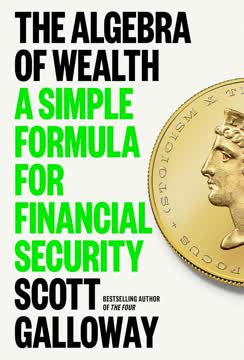
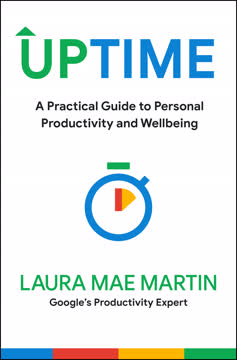
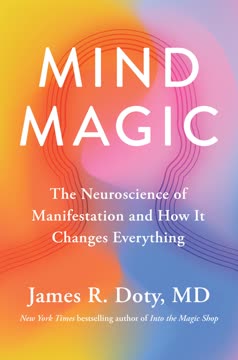
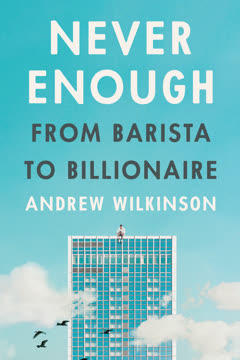
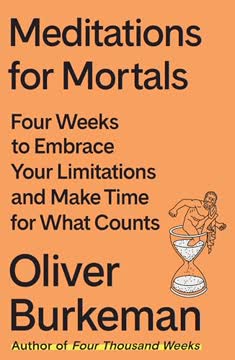
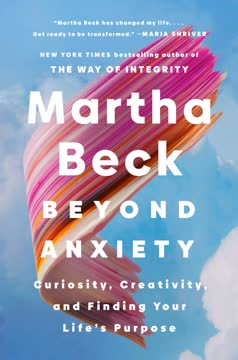
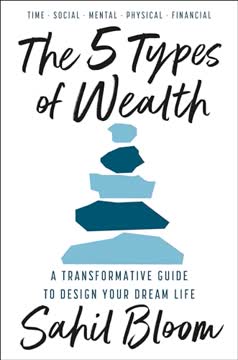
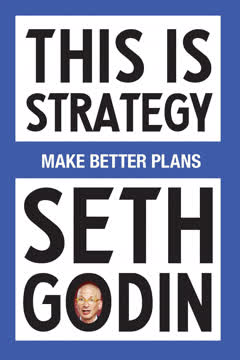
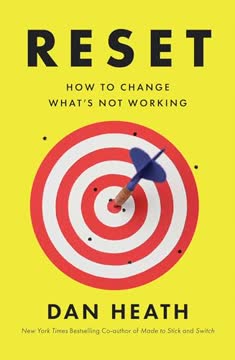
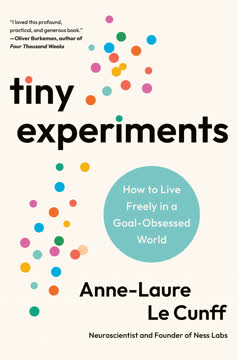
Download PDF
Download EPUB
.epub digital book format is ideal for reading ebooks on phones, tablets, and e-readers.
